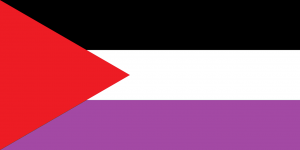Language/Mesopotamian-arabic/Grammar/Pronouns
Hi Mesopotamian Arabic learners! 😊
In this lesson, we will be focusing on pronouns in Mesopotamian Arabic. Pronouns are small words used in place of nouns to avoid repetition. They are key to building efficient and effective sentences.
Take a moment to explore these relevant pages as you conclude this lesson: Questions, Conditional Mood & How to Use Be.
Personal Pronouns[edit | edit source]
Personal pronouns are used to represent a specific person or thing. They can be either subject pronouns or object pronouns, depending on their function in the sentence. Here are the personal pronouns in Mesopotamian Arabic:
| Mesopotamian Arabic | Pronunciation | English |
|---|---|---|
| أنا | ana | I |
| أنتَ | anta | you (masculine, singular) |
| أنتِ | anti | you (feminine, singular) |
| هوَ | huwa | he |
| هيَ | hiya | she |
| نَحنُ | nahnu | we |
| أنتُما | antuma | you (dual) |
| أنتُم | antum | you (masculine, plural) |
| أنتُنَّ | antunna | you (feminine, plural) |
| هما | huma | they (dual) |
| هُم | hum | they (masculine, plural) |
| هُنَّ | hunna | they (feminine, plural) |
Here's an example dialogue:
- Person 1: أنا طالب. (Ana talib.) - "I am a student."
- Person 2: أنتِ طالبة؟ (Anti taliba?) - "Are you a student?"
As you may have noticed, Arabic is a gendered language. The feminine and masculine forms of the pronouns are used depending on the gender of the noun being replaced.
Demonstrative Pronouns[edit | edit source]
Demonstrative pronouns are used to indicate specific people or objects in relation to the speaker. They can be either near or far in distance or time. Here are the demonstrative pronouns in Mesopotamian Arabic:
| Mesopotamian Arabic | Pronunciation | English |
|---|---|---|
| هذا | hadha | this (masculine) |
| هذه | hadhihi | this (feminine) |
| ذلك | dhalika | that (masculine) |
| ذلكَ | dhalika | that (feminine) |
Here's an example dialogue:
- Person 1: هذا كتابي. (Hadha kitabi.) - "This is my book."
- Person 2: هذه قلمي. (Hadhihi qalami.) - "This is my pen."
Possessive Pronouns[edit | edit source]
Possessive pronouns show ownership of a specific object or person. In Mesopotamian Arabic, they are attached to the end of a noun. Here are the possessive pronouns in Mesopotamian Arabic:
| Mesopotamian Arabic | Pronunciation | English |
|---|---|---|
| ي | yi- | my |
| كَ | ka- | your (masculine, singular) |
| كِ | ki- | your (feminine, singular) |
| هُوَ | huwa- | his |
| هِيَ | hiya- | hers |
| نَحنُ | naHnu- | our |
| كُما | kuma- | you (dual) |
| كُم | kum- | your (masculine, plural) |
| كُنَّ | kunna- | your (feminine, plural) |
| هُمَا | huma- | their (dual) |
| هُم | hum- | their (masculine, plural) |
| هُنَّ | hunna- | their (feminine, plural) |
Here's an example dialogue:
- Person 1: هذا كتابي. (Hadha kitabi.) - "This is my book."
- Person 2: هذه قلمي. (Hadhihi qalami.) - "This is my pen."
Interrogative Pronouns[edit | edit source]
Interrogative pronouns are used to ask questions. In Mesopotamian Arabic, they are similar to the English pronouns "who," "what," "where," "when," "why," and "how." Here are the interrogative pronouns in Mesopotamian Arabic:
| Mesopotamian Arabic | Pronunciation | English |
|---|---|---|
| من | man | who |
| ما | ma | what, why |
| أين | 'ayna | where |
| متى | mata | when |
| لِماذا | limadha | why |
| كيف | kayf | how |
Here's an example dialogue:
- Person 1: من هوَ هذا؟ (Man huwa hadha?) - "Who is this?"
- Person 2: هذا أخي. (Hadha akhi.) - "This is my brother."
Remember, to improve your Mesopotamian Arabic Grammar, you can also use the Polyglot Club website. Find native speakers and ask them any questions!
Sources[edit | edit source]
- Arabic Pronouns Wikipedia Page
- Wikipedia Article on Demonstrative Pronouns
- Wikipedia Article on Possessive Pronouns

